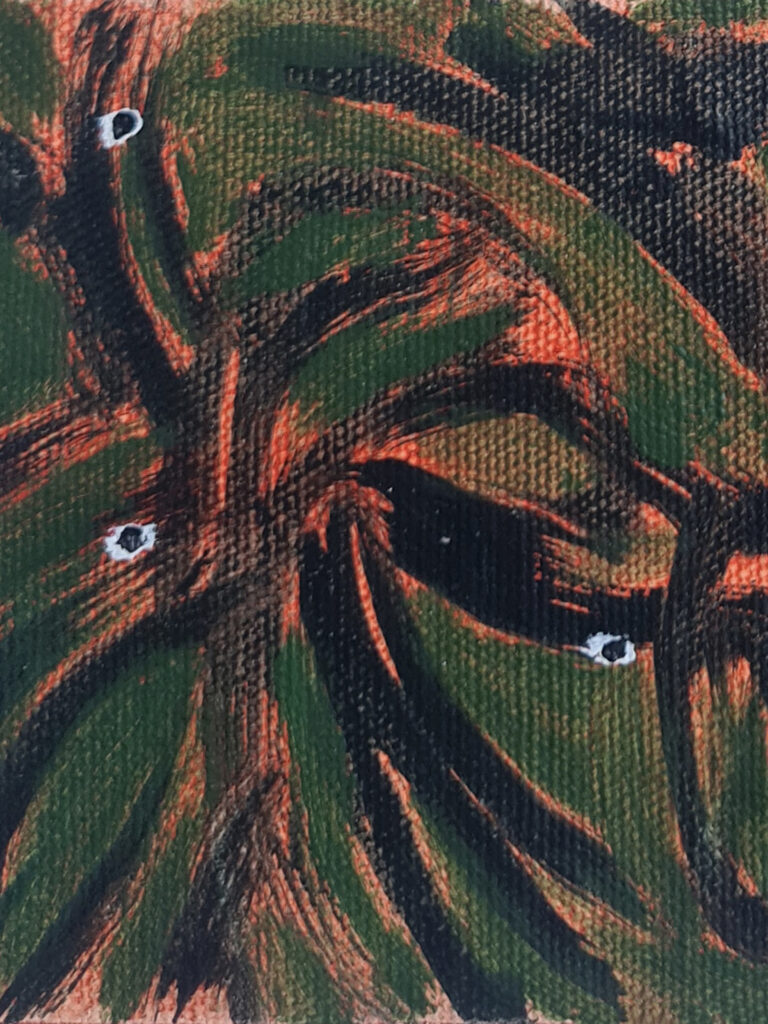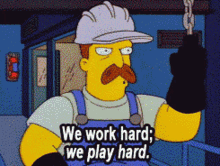‘Permanent’ and ‘Artist-run’ are not two phrases we normally see next to each other. The artist is taught not to dream of solid ground, instead living in a world of;
temporary exhibitions,
meanwhile leases,
short-term sublets,
interim projects,
makeshift studios,
provisional spaces,
stand-in lecturers,
roving entities,
and ephemeral practices.
Artist-run culture balances on the knife edge of precarity and vitality. This has always been the tradeoff for resisting institutionalisation – these projects burn bright but quick, and their importance and impact is often understood best after the doors have closed for the last time, as they so often do when subject to a competitive property market.
Nothing lasts forever, but you knew that already, and it’s the kind of paternalistic head-pat sentiment that feeds quite well into a world that would sell you precarity as flexibility, and would like artists to just ‘pop-up’ temporarily in a space that needs tidying and caretaking before the real money-makers arrive.
This piece of writing is going to dare to think about Permanence – what would it mean to make something that lasts a long time? How can that happen? I’m going to draw upon my experiences as a founder member, and current Programme and Development Coordinator at Two Queens, an artist-run gallery and studios that has been running in Leicester since 2012.
The Practical Case for Permanence
Beyond sentimentality, why care about permanence? Why not be happy with the temporary? Firstly, If the project isn’t permanent it’s hard to build a real community around what you do. Someone who comes to your exhibition / event / workshop and enjoys it, wants to know they can come to the same place another time and do something similar. If you have to move you lose them – it’s like the business maxim that says it is 5 times easier to keep an existing customer than gain a new one – without a permanent location, generating loyal and returning audiences is really difficult.
The second argument for permanence is the ability to plan, to think long-term, and in turn to access more substantial pieces of funding. This could be capital funding, (i.e money to improve a building, or buy it) which usually requires you to have at least 5 years on a lease. Up until now, Two Queens has never had 5 years on a lease, and that’s a big reason why we’ve never been able to make any substantial improvements to the building to make it a better, warmer, more accessible and sustainable public space.
Thinking longer-term could also be wanting to join the Arts Council National Portfolio, which runs on 4 year cycles, so if your lease is up within 4 years it’s hard to make a strong case for why you should receive that regular funding. Instead, you might be stuck applying for shorter term project grants, with more uncertainty about whether you can maintain a consistent level of public programming. With a greater sense of permanence comes the ability to create projects with proper planning, proper development time, and a higher quality of community engagement as a result.
A Permanent work in progress
How to achieve this permanence then? The trick might be to think of permanence not as a prolonged fixed state, but one of self-sustaining renewal. The thing (a building lets say) is going to be made and remade many times, and each time it will change a bit, and each time it will grow a bit. That could be about all the different people who come through the door, or occupy studio spaces, or changes of landlords, or changing where the walls are, or the ways you make money. I always say ‘Two Queens is a work-in-progress and it always will be’ – when it stops being that, it will become stale, boring, an institutional and probably bureaucratic thing.
It’s pertinent in a discussion about permanence that we try to learn something from Permaculture. I’m no expert on this in a hands-on agricultural way, but there’s plenty we can learn from these cyclical models that favour regenerative growth, rather than the unsustainable kind of growth that is measured only in terms of economic output. All of David Holmgren’s 12 principles of permaculture are useful to people trying to build sustained systems, but for this text, the 12th and final principle ‘Creatively use and respond to change’ seems most apt.
One of the skills of artists is to take something undervalued and re-present it to the world in a new form, adding some value along the way. Forms, objects, materials, concepts, but maybe also spaces. Applying this creative mindset to the new opportunities given to us by wider social change is one way that we might make something stronger, even permanent. Once, vacated industrial buildings were the leftovers of the city, and the easiest places for artists to get into. Now that most of these buildings have either been converted to residential use or crumbled, it is the retail and office spaces that are more likely to be standing empty in a post-covid, post-amazon world. Joining up with organisations like Power to Change, who are seeking to re-evaluate the place of the High Street, would be a good place to start for anyone trying to set up a grassroots arts organisation today.
Co-Operating
Generally, the default in the arts is for new organisations to form as a Community Interest Company, a form that was introduced and pioneered in the New Labour era, or as a charity. When we formed Two Queens, our awareness of cooperatives was very minimal, limited at most to retail, housing and manufacturing – not something we associated with the visual arts and culture.
Going down the traditional charity route presents challenges around trading income. Charities are required to have a low risk appetite, and trading is seen as risky, for example a charity that runs a cafe as part of its operation might do so through a trading subsidiary – a separate company that can absorb most of the associated risk and donates its profits annually to the charity. I have heard differing advice on whether running artist studios has sufficient public charitable benefit, or whether it is a form of commercial property trading that is too risky for charities to get involved with.
At the same time, charitable arts organisations are always being told that they need to be more enterprising, to make more money and be less reliant on grant funding. The trading subsidiary is one workaround, but cooperative structures already have this in-built – as social/democratic businesses they trade in order to generate social benefit. I really think there is a huge potential, and much to be gained from visual arts organisations recognising and getting more involved with the international cooperative movement, which has at its heart the values and principles that most in the arts would share. In my experience, artist-run organisations tend to act like cooperatives by default, involving their members in decision making, acting in solidarity with others, and applying any profits to create social benefit.
Co-operatives can occupy a really useful position between being socially beneficial (as charities are) and enterprising (as trading businesses are). Being a cooperative allows you to use some of the best and most useful mechanisms of private business (such as share capital) and put them to social ends. Rather than the charitable mindset which is reliant on beneficial trusts, foundations, or government funding allocations, the cooperative values of ‘Self-Help’ and ‘Self-Responsibility’ place the emphasis on making money and putting it to good use. To me, co-operatives are about choosing to be proactive, and to make meaningful change on your own terms, rather than demanding change that is beyond your control to enact.
Send the Artists to Business School
Most artists didn’t go to business school. Lots of artists go to art school where, often, money can be something of a dirty subject. To sully the conceptual purity of your practice by naming its price, or to assess the merits of your work in economic terms, goes against a system of values that favours idealism above materialism. The buying and selling of art goes on under the counter, out of public view and shrouded in mystery for most artists.
Sadly, this lack of awareness and confidence around money leads to new graduates undervaluing their labour and being unable to spot and avoid exploitative opportunities. It also means those who are setting up organisations are not business-minded (I wasn’t), and often see generating revenue and turning a profit as intrinsically unethical. I’m embarrassed to say that when we set up Two Queens I felt it was somehow immoral for anyone to be getting paid in a not-for-profit organisation, or to pay ourselves using arts council funding. That was our first mistake, and it took three years before we finally started paying our first staff member to look after the studios and do the book-keeping.
Something we did do right, from day one, was to see the gallery side of the operation and the studios as two separate but interrelated entities. The revenue we generate from our artist workspaces pays the rent, bills and a small amount of staffing that keeps the building running. The gallery does not take money from the core business, except for occupying a quarter of the building floorspace, effectively meaning its overheads are subsidised by the studios as a support-in-kind. At its core, the organisation has always been self-sufficient, with any grant funding allowing a greater level of higher quality public programming, but not essential to keeping the doors open. When our funding bids get turned down, as the funding landscape becomes increasingly competitive, we are able to maintain a base level of activity, and are not entirely dependent on grants.
Sometimes people try to make the argument that artists are Entrepreneurs, and while there is truth in this, I am skeptical of it, because it tends to feed into a ‘heroic individual’ mindset – fitting neatly into ‘hussle culture’, with its suggestion that your success will be at the expense of others. What co-operatives teach us is that it’s not the profit in and of itself that is bad, it’s where that profit ends up and who benefits that counts – solidarity rather than competition between cooperatives is intrinsic to achieving collective success. Getting involved with cooperatives has taught me not to be scared of Business, and if anything I think we need talk less about artists being entrepreneurs, and do more to teach artists about business, as a social, community tool.
Community Shares
Community shares are a form of withdrawable, non-transferable finance that can be offered by some Co-Operative organisations. ‘Withdrawable’ because money that is invested by a community in return for shares is repaid to them at a later point. ‘Non-transferable’ because the holders of those shares can’t sell them on to a third party. ‘Finance’ because it is a way of borrowing money cheaply – not a donation or a grant. It’s a bit like crowdfunding, but people eventually get their money back, and can earn interest on their investments too. The mechanism has been most widely used for community takeovers of pubs and village shops, but also for all manner of projects like football clubs, lidos, harbours and community energy projects.
Why is this a useful thing for visual arts organisations? For me, this is still the only method I’m aware of for raising substantial amounts of money to use on capital projects that is not dependent on the timescales of a funder. The turnarounds on capital funding streams (which are few and far between) always seem to be really short, and any capital project requires a big chunk of money to get through the first stages. For a capital improvements project, it’s not unusual to be asked for architectural plans at RIBA stage 3, which is costly to achieve. Instead, if you are the right kind of organisation you could run a share offer at any time, and at your own pace. It is also not secured borrowing, as for example loans or mortgages usually are, therefore it is open to organisations that don’t already own a large asset to borrow against. Perhaps most importantly it makes use of the power of community, which is hopefully one of the things you do have on your side as an artist-run space – if enough people care about what you do and would be willing to chip some money in then it could be a way to raise a substantial piece of capital.
For me, the advantages over traditional donation crowdfunding are in the possibility to raise a greater amount per investor, and to access institutional equity. In 2024, faced with an ending lease and the prospect of having to wind up the organisation, Two Queens raised just over £150,000 through a community share offer with the intention of buying and improving our building. This £150k comprised roughly 33% public contributions, and another 33% each from two equity match investors (Community Shares Booster and Community Shares ICOF) who put in money that matched public investments pound-for-pound.
The minimum investment per person for our share offer was £50, and the majority of investors chipped in this minimum amount, but if we had run this as a traditional donation crowdfunder my instinct is that most of those minimum level investors would have given us between £5-£20, not £50 – we would have been lucky to raise a total of £20k, not £150k, for a project that could have taken a similar amount of time and effort to organise. There are also a few pieces of development funding available for community shares projects, meaning you can pay someone to help develop the project, or possibly to create extra staff time within the organisation (Co-Operatives UK Booster and SIB Reach Fund in particular).
The catch is, that to be able to run a Community Share Offer, you need to be either a Co-operative Society or a Community Benefit Society (a CBS – which Two Queens is), both organisation forms that are registered with the Financial Conduct Authority. In our case, we needed to convert from a not-for-profit company limited by guarantee into a CBS, a process that took longer and was a bit more complicated than we hoped it would be. These delays could have been avoided if we had been encouraged to think about forming as a co-operative in the first place, over a decade ago.
What Happens Next
In the medium-long term, Two Queens is working to buy the freehold of our building and place it in community ownership. While it is standard for not-for-profit organisations, including Community Interest Companies to have an ‘asset lock’ in their rules, meaning their property must be shared for social benefit if they have to wind up operations, community ownership goes beyond this, with the community that benefits most from their work having a stake in their ownership too, deciding how it is run and in turn protecting its status as a community asset.
Whilst the £150k+ we raised was only one part of a bigger project to keep Two Queens open and improve it, it was the vital first piece of fundraising, which has now opened other doors and can act as match funding against other grants and loan finance. This is the most money we have ever raised in one go, and while not the full amount we needed to buy the building freehold in one go, still gets us some of the way. I feel the Community Share Offer form is underused in the visual arts, and along with a shift to a cooperative rather than charitable mindset, could be really beneficial to building more resilient, more permanent artist-run spaces, that can face the challenges of a shifting economic landscape, and as per Permaculture principle 12 – ‘Creatively use and respond to change’.
Daniel Sean Kelly is an artist and arts worker based in Leicester. He leads the fundraising and development activity at Two Queens, an artist-run gallery and studios based in Leicester, including ongoing work to place the organisation in community ownership and secure a more accessible and sustainable future for their work. He is increasingly involved with Cooperative Business Development and is working to spread awareness of cooperative models within the contemporary visual arts.
Share:



